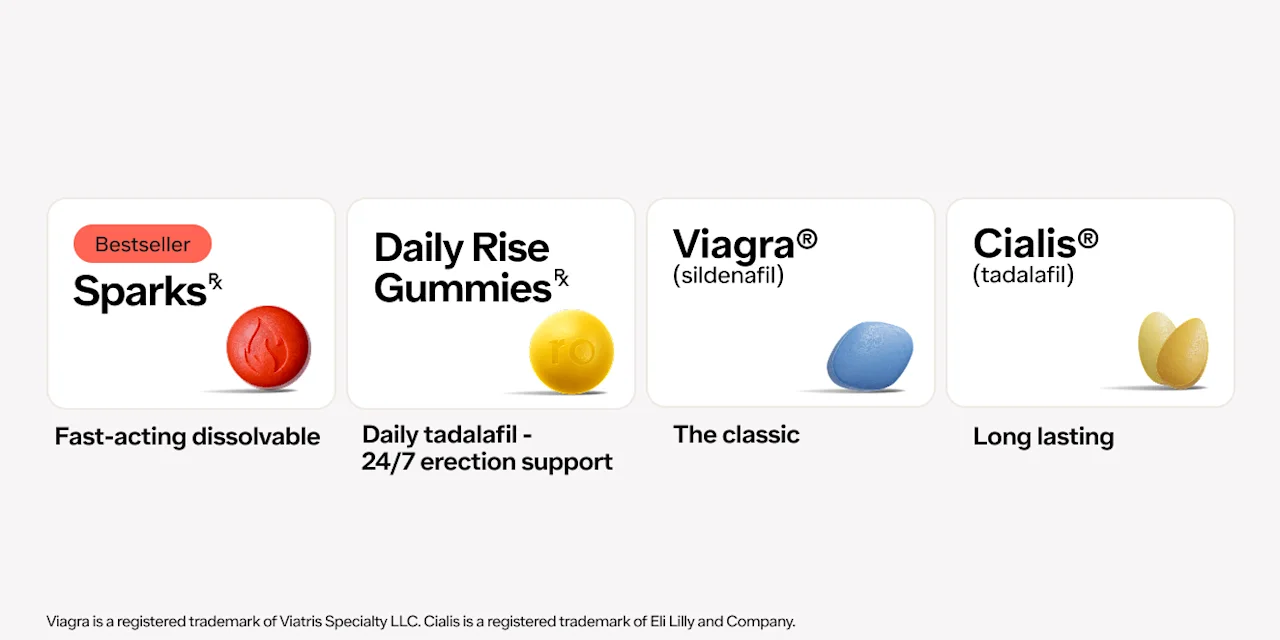Here's what we'll cover
Here's what we'll cover
Jelqing is an exercise intended to increase the length and girth of the penis by pulling and massaging it to create micro-tears, which supposedly thicken and expand as they heal. But does jelqing actually work?
Sources say no. As long as there have been penises, there have been men willing to go to extreme lengths to make them bigger, convinced that what nature gave them is inadequate.
Jelqing is one of the oldest penis enlargement techniques in the book, dating back to ancient times in the Middle East. However, there’s no scientific evidence to support that jelqing works. On top of that, it can also cause painful and even permanent damage to your penis.
What exactly is jelqing?
The exercise involves pulling and massaging the penis with your fingers or a specially designed jelqing device.
The idea behind this is the same one behind building muscle and scar tissue: stretching the tissue creates micro-tears, which thicken and expand during the healing process. Unfortunately, there’s no scientific evidence that jelqing works this way––or at all.
Despite the lack of evidence that jelqing makes your penis bigger, there’s no shortage of information on YouTube and Reddit boards about the benefits of jelqing.
Case in point: a seriously NSFW jelqing video titled "Proof You Can Get a Longer Penis" posted in 2016 has racked up over 30 million views. The purveyor claims to have added three inches to his erect girth after two years of jelqing daily. Elsewhere on social media, die-hard jelqers say the technique creates firmer erections and improves erectile dysfunction. But again, there is no scientific proof that any of this is true.
How do you jelq?
There are a few variations on how to jelq. Going by the sites dedicated to it, the consensus seems to be this:
Apply lube so you don’t chafe your penis.
Make a circle with your index finger and thumb (like making an OK sign).
Keeping the OK sign, position your fingers at the base of your penis and tighten the circle slightly to create pressure on your shaft (just a bit, it should not be painful).
Using your fingers, slowly stretch the penis by sliding the OK sign down your penis from the base to the head.
Do this for a few minutes once or twice a day.
You can experiment with other jelqing techniques, too. For example, you can try different grips. Instead of making a circle with your fingers, you can place your index finger on top of your shaft and your thumb below and apply mild pressure as you pull down from the base to the head. Or, you can try jelqing without lube if you find yourself getting a bit too excited. Try using something less slippery instead, and remember to be gentle with the pressure to avoid chafing.
There are also contraptions to assist with jelqing available online under names like "the Penilizer," which grips the penis between traction rollers or plastic arms. Yikes.
Does jelqing work?
There are no formal clinical trials on the effectiveness of jelqing. And any other data that has been reported is mostly anecdotal and not very impressive.
There is, however, a minimal amount of research in existence on the use of traction devices (a device worn to place tension on a flaccid penis) to lengthen and increase the girth of penises. One 2011 study of only 23 people with penises found that the use of traction devices did increase the length of participants' penises by up to one inch following 3 months of use for 9 hours a day. But literature reviews from 2013 and 2016 found that traction devices were only effective in treating deformities, not increasing size.

In 2018, PhalloGauge Medical, a site that sells penis extenders, claimed they conducted an extremely small study on jelqing for penis enlargement. Seven men were enlisted to do 200 jelqing strokes per day for three months and asked to measure their penises along the way. At the end of the study, the average increase was 0.13 inches in length and 0.3 inches in girth. The conclusion was that any changes were minor, and the technique was not a promising one for penis enlargement.
Side effects and risks of jelqing
A major downside to jelqing is it actually poses a risk of injury. Let's take a look at the anatomy of the penis and what can go wrong if you damage its internal structures.
The penis is filled with spongy tissues called the corpus cavernosum and corpus spongiosum. The shaft and glans of the penis contain thousands of highly sensitive nerve endings that play an important role in feelings of sexual pleasure. When you’re aroused, the spongy areas fill with blood and expand, creating an erection.
During this process, blood flows through two vessels called cavernosal arteries. These arteries open up to maximize blood flow into the penis while preventing any blood from draining out. Jelqing can damage this intricate system. Side effects from jelqing can include bruising, swelling, numbness, pain, irritation, and permanent damage that causes erectile dysfunction (ED).
How to avoid injury while jelqing
The following tips may help reduce side effects while jelqing:
Lubricate your penis. You don’t have to use lube if that gets you too excited, but it’s smart to use something to prevent chafing and irritation. You can try Vaseline, unscented lotion, or oil.
Don’t jelq when you’re hard. Jelqing works best (if it works at all) when you can still move some blood into the penis. When you’re hard, the penis is already filled with blood. Try jelqing when you’re aroused and starting to get hard, but not all the way there just yet.
Stop if you notice any pain or discomfort. Jelqing should not be painful. If you experience any pain or irritation, stop immediately and give your penis a rest! If you notice any signs of penis injury — including bruising, red spots, ruptured veins, or pain, numbness, or irritation that does not go away — talk to a healthcare provider.
Don’t overdo it. Jelqing should only be done once or twice a day, for a few minutes at most. Doing it more often than that can lead to side effects, possibly even permanent damage or ED.
When can you expect to see results from jelqing?
Chances are, you’ll never see noticeable results from jelqing. Currently, there is no peer-reviewed research that backs up the claims that jelqing works. Of the studies that have found success, the participant numbers were very small, and the outcomes suggested that it takes a lot of time and effort to see minimal, if any, results from jelqing or similar methods. For example, In one study of 23 men, participants increased their penis length (but not girth) by about 1 centimeter after wearing a penile extender for 9 hours a day for three months.
Alternative penis enlargement techniques
While jelqing is most likely ineffective when it comes to lengthening your penis, there may be other options. However, it’s important to keep your expectations low.
Surgery
In terms of permanent results, penis enlargement surgery is the most effective. Several penis enlargement surgeries are available—from snipping the penis's internal ligament so the penis hangs lower to inserting a permanent implant in the penis—that can increase length (or at least the appearance of length) and girth.
Traction devices
As previously mentioned, research on traction devices, or penis extenders, is slim, and results are varied. Penis extenders are readily available online, but they’re not for everyone, and they come with risks. The devices work by placing your penis in a small stretching rack or traction device and wearing it under your clothes for several hours a day to stretch your penis.
These devices are typically used for people with a specific medical condition known as Peyronie's disease (PD). The condition causes the penis to become bent, resulting in pain and/or erectile dysfunction. A 2009 study found that people with PD who used penis extender devices for six months gained an average of 0.83 centimeters in length but no change in girth. Though the numbers seem minimal, participants also saw a 33% reduction in penis curvature and were satisfied with the results.
To be clear, in the case of participants with PD, the traction devices straightened curvature, creating the illusion of increased length. A person without Peyronie’s disease probably won’t see the same results.
Do you have penis dysmorphia?
Before you place your penis in a potentially dangerous traction device, ask yourself–is it really worth it?
Penis enlargement ads are everywhere, from gas stations to porn. This constant messaging has caused many people to develop unrealistic expectations and disordered thinking about their bodies. These industries prey on age-old insecurities, and the rise of access to media has only worsened the problem. This can lead to what psychologists call “small penis anxiety” or “penis dysmorphia syndrome”: the irrational, unshakable belief that you just don't measure up.
And unlike jelqing, there are several studies that show that penis dysmorphia is a very real thing. Research shows that men overestimate what is considered a “normal” penis size by 1–2 inches. In fact, most men who seek out penis enlargement surgery have penises that are within the normal range.
The truth is, you’re probably more average than you think. Contrary to popular belief, the average erect penis length is roughly 5–5.5 inches. So don't let porn—which is, by definition, fake—lower your self-esteem and negatively affect your real sex life.
Developing emotional intimacy with your partner(s) and open communication about what everyone involved likes (in and out of bed) goes a lot further toward great sex than the size of your anatomy.
DISCLAIMER
If you have any medical questions or concerns, please talk to your healthcare provider. The articles on Health Guide are underpinned by peer-reviewed research and information drawn from medical societies and governmental agencies. However, they are not a substitute for professional medical advice, diagnosis, or treatment.
Chung, E. & Brock, G. (2013). Penile traction therapy and Peyronie's disease: a state of art review of the current literature. Therapeutic Advances in Urology, 5(1), 59–65. doi:10.1177/1756287212454932. Retrieved from https://www.ncbi.nlm.nih.gov/pmc/articles/PMC3547530/
Gontero-a, P., Di Marco, M., Giubilei, G., et al. (2009). A pilot phase-II prospective study to test the 'efficacy' and tolerability of a penile-extender device in the treatment of 'short penis'. BJU International, 103(6), 793–797. doi: 10.1111/j.1464-410X.2008.08083.x. Retrieved from https://pubmed.ncbi.nlm.nih.gov/18990153/
Gontero-b, P., Di Marco, M., Giubilei, G., et al. (2009). Use of penile extender device in the treatment of penile curvature as a result of Peyronie's disease. Results of a phase II prospective study. The Journal of Sexual Medicine, 6(2), 558–566. doi: 10.1111/j.1743-6109.2008.01108.x. Retrieved from https://pubmed.ncbi.nlm.nih.gov/19138361/
King, B. M. (2021). Average-size erect penis: fiction, fact, and the need for counseling. Journal of Sex & Marital Therapy, 47(1), 80–89. doi: 10.1080/0092623X.2020.1787279. Retrieved from https://pubmed.ncbi.nlm.nih.gov/32666897/
Lee, J. K., Tan, R. B., & Chung, E. (2017). Erectile dysfunction treatment and traditional medicine-can East and West medicine coexist?. Translational Andrology and Urology, 6(1), 91–100. doi:10.21037/tau.2016.11.13. Retrieved from https://www.ncbi.nlm.nih.gov/pmc/articles/PMC5313309/
Lever, J., Frederick, D. A., & Peplau, L. A. (2006). Does size matter? Men's and women's views on penis size across the lifespan. Psychology of Men & Masculinity, 7(3), 129–143. doi: 10.1037/1524-9220.7.3.129. Retrieved from https://psycnet.apa.org/record/2006-09081-001
Li, M. K., Shahinyan, G., Sigalos, J. T., Mills, J. N., & Eleswarapu, S. V. (2023). Penile and Foreskin Stretching Practices Through Time and Culture. Urology, 175, 2–5. https://doi.org/10.1016/j.urology.2023.02.018. Retrieved from https://www.goldjournal.net/article/S0090-4295(23)00183-8/fulltext
Nikoobakht, M., Shahnazari, A., Rezaeidanesh, M., et al. (2011). Effect of penile-extender device in increasing penile size in men with shortened penis: preliminary results. Journal of Sexual Medicine, 8(11), 3188-92. doi:10.1111/j.1743-6109.2009.01662.x. Retrieved from https://pubmed.ncbi.nlm.nih.gov/20102448/
Oderda, M. & Gontero, P. (2011). Non-invasive methods of penile lengthening: fact or fiction? BJU International, 107(8), 1278–1282. doi:10. 1111/j.1464-410X.2010.09647.x. Retrieved from https://pubmed.ncbi.nlm.nih.gov/20868389/
PhalloGauge.com. (2020). Jelqing: Results, Safety, Side-Effects, Techniques, and Alternatives. Retrieved from https://phallogauge.com/jelqing/
Sharp, G., Fernando, A. N., Kyron, M., et al. (2022). Motivations and Psychological Characteristics of Men Seeking Penile Girth Augmentation. Aesthetic Surgery Journal, 42(11), 1305–1315. doi:10.1093/asj/sjac112. Retrieved from https://www.ncbi.nlm.nih.gov/pmc/articles/PMC9558456/
Usta, M. F. & Ipekci, T. (2016). Penile traction therapy for Peyronie's disease-what's the evidence?. Translational Andrology and Urology, 5(3), 303–309. doi:10.21037/tau.2016.03.25. Retrieved from https://www.ncbi.nlm.nih.gov/pmc/articles/PMC4893512/
Veale, D., Miles, S., Read, J., et al. (2015). Sexual Functioning and Behavior of Men with Body Dysmorphic Disorder Concerning Penis Size Compared with Men Anxious about Penis Size and with Controls: A Cohort Study. Sexual Medicine, 3(3), 147–155. doi:10.1002/sm2.63. Retrieved from https://www.ncbi.nlm.nih.gov/pmc/articles/PMC4599552/
Wylie, K. R. & Eardley, I. (2007). Penile size and the 'small penis syndrome.' BJU International, 99(6), 1449–1455. doi: 10.1111/j.1464-410X.2007.06806.x. Retrieved from https://pubmed.ncbi.nlm.nih.gov/17355371/










